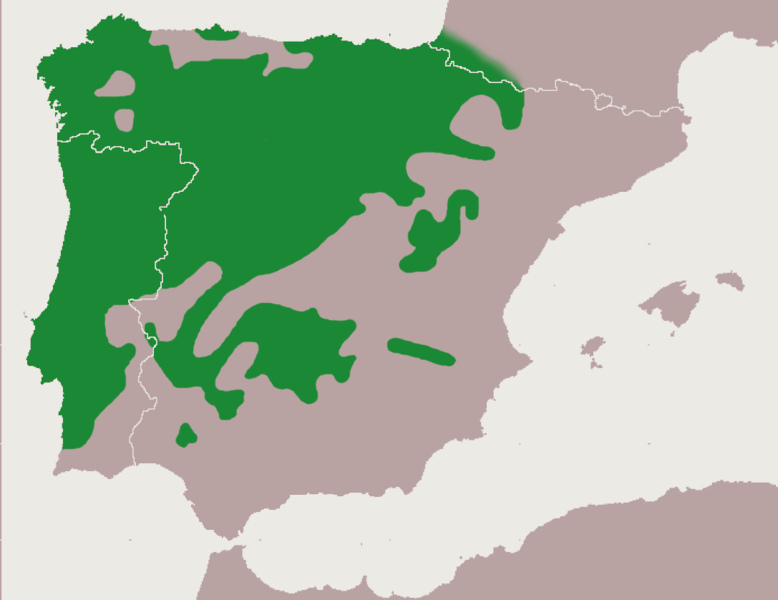A tree frog in a pond.
Introduction
On one of our botanical searches we came to a small pool of water, which as usual was inmediately investigated for the presence of amphibians and what a surprise: along the side and hidden among the reeds there was a tree frog. By approximation it disappeared under water, but apparently the animal wasn´t to comfortable under water because every minute or so it came back to the surface. After a few pictures we decided to try to catch it for a detailed inspection, which with a lifetime developed catching technique wasn´t too difficult. After close inspection the animal was put on a branch for a picture and as usual it barely wanted to leave my warm hand. The animal was cooperating very well and after some shots it was put back again at the place where it was caught.Information about the tree frog.
In the northwestern half of the Iberian Peninsula the tree frog Hyla arborea is replaced by the subspecies Hyla arborea subsp. molleri, although many scientists consider it as a separate species: the Hyla molleri. Anyway, the tree frog is a small green frog that usually dwells between the foliage on damp places near water. This frog is a good climber which is due to the adhesive disks on fingers and toes. It has a smooth green skin with on both sides a black stripe along the body, which seperates the dorsal skin from the ventral skin. This black stripe is bordered by a white line. The ventral skin has an ocher-yellowish color, which of course we usually can´t see. The pupils are horizontal and the iris has a color similar to the belly of the frog, but slightly yellower with a golden appearance. Normally this species is active at night so it was a real opportunity to find it. In Spain, the species is booked as "near threatened" and the populations are declining for several reasons, of which the most important are: the increasing general desiccation of Spain, decrease of the right habitats, and contamination of water by agricultural fertilizers which is very damaging to the larvae.The favorite food consists of insects, especially ants, but however the frog itself is also on the menu of vipers, owls and kestrels, among others.
READ MORE AND ENJOY THE PICTURES.

This distribution map is taken from the blog of the Asociación Alytes, from the biology faculty of the UCM. This map shows that the Hyla arborea molleri occurs mainly in the south of the Cantabrian Mountains.
Although hidden among the reeds, it was still observed despite its green camouflage.
After hiding below water it didn´t take too long for the frog to come up again.
This is the pond, a small oasis between the agricultural farmlands adjacent to the southern foothills of the Cantabrian Mountains.
Eventually the animal came within reach, and removing it out of the water without hurting it is only a matter of technique.
The animal was really cooperative and was posing very well.
The back and sides have a smooth green skin.
From this angle the black stripe with the white line is good visible.
The belly has an ocher-yellow color and is clearly less smooth than the back.
On this close up the details are very clear, specially the discs on the fingers and toes, the horizontal pupil and the colour of the iris.
Hoi Marius,
ReplyDeleteHeel mooi verhaal en foto's, ik blijf je volgen.
Gr Cees
Hallo Cees, bedankt hoor. Jouw foto´s van rondom Barneveld zijn ook erg mooi. Ik woonde vroeger in Soest, niet zo ver van Barneveld.
ReplyDeleteGroetjes, Marius
"If you would like to take a good deal from this post then you have to apply such strategies to your won blog."
ReplyDelete카지노사이트
무료야설
대딸방
마사지블루
마사지
Pretty good post. I have just stumbled upon your blog and enjoyed reading your blog posts very much. I am looking for new posts to get more precious info. FOR MORE INFO: 스포츠토토
ReplyDelete